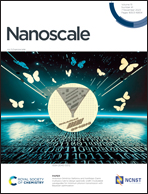Two molecule force spectroscopy on ligand–receptor interactions
Abstract
Many biological processes involve the rupture of multiple ligand–receptors or multivalent ligand–receptors. It is challenging to study the rupture of such parallelly arranged multiple ligand–receptors due to the difficulties in engineering such systems in a well-controlled fashion. Here we report the use of two-molecule force spectroscopy to investigate the rupture of two parallelly arranged monomeric streptavidin (mSA)–biotin complexes. By using SpyCatcher-SpyTag chemistry, we successfully engineered a molecular twin of biotin, in which two biotins are arranged in parallel. By reacting mSA with twin biotin, we constructed parallelly arranged two mSA–biotin complexes for force spectroscopy experiments. The incorporation of single molecule fingerprint domains into our mSA–biotin dimers allowed us to identify and assign the rupture events of the parallelly arranged mSA–biotin complexes without any ambiguity in the two-molecule force spectroscopy experiments. Our results revealed that the rupture force of the parallel dimer mSA–biotin is 172 pN at a pulling speed of 400 nm s−1, which is about 1.6 times of that of single mSA–biotin (105 pN). Furthermore, our findings indicate that the two mSA–biotin behave as non-interacting, independent ligand–receptors. The strategy we demonstrated here can be extended to other ligand–receptors and may open up an avenue toward rigorously testing the theoretic predictions proposed in various models regarding the rupture of multiple parallel ligand–receptors.



 Please wait while we load your content...
Please wait while we load your content...